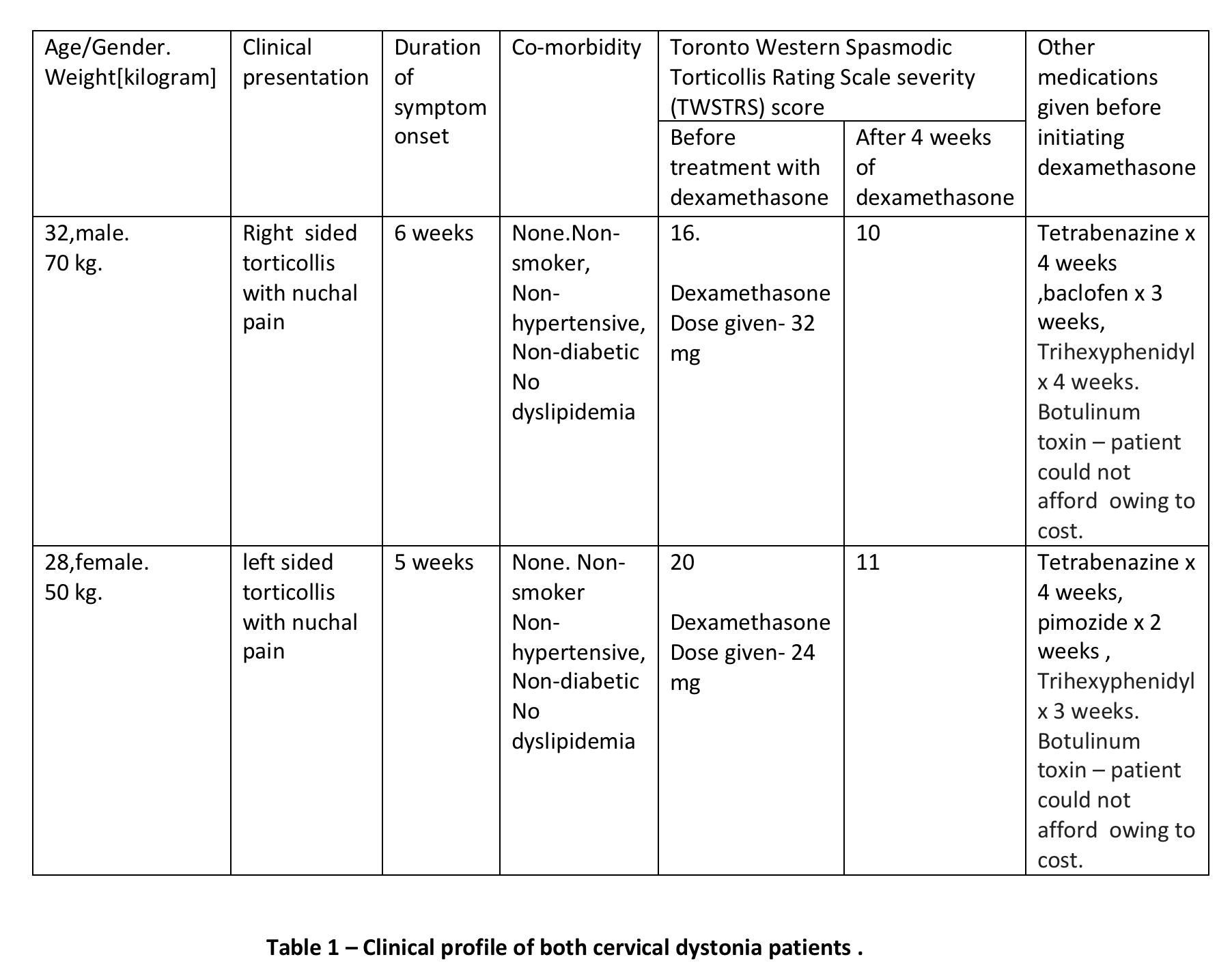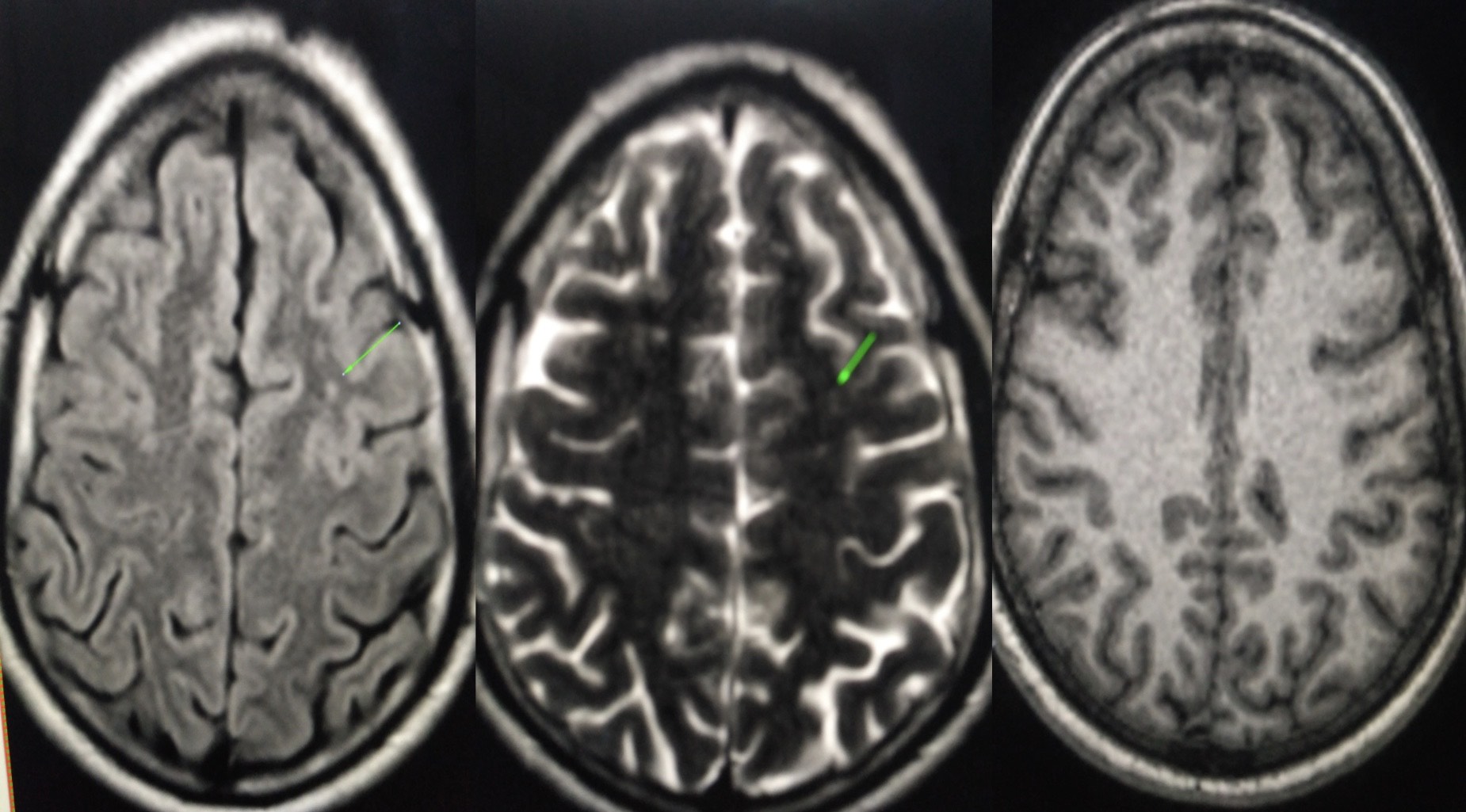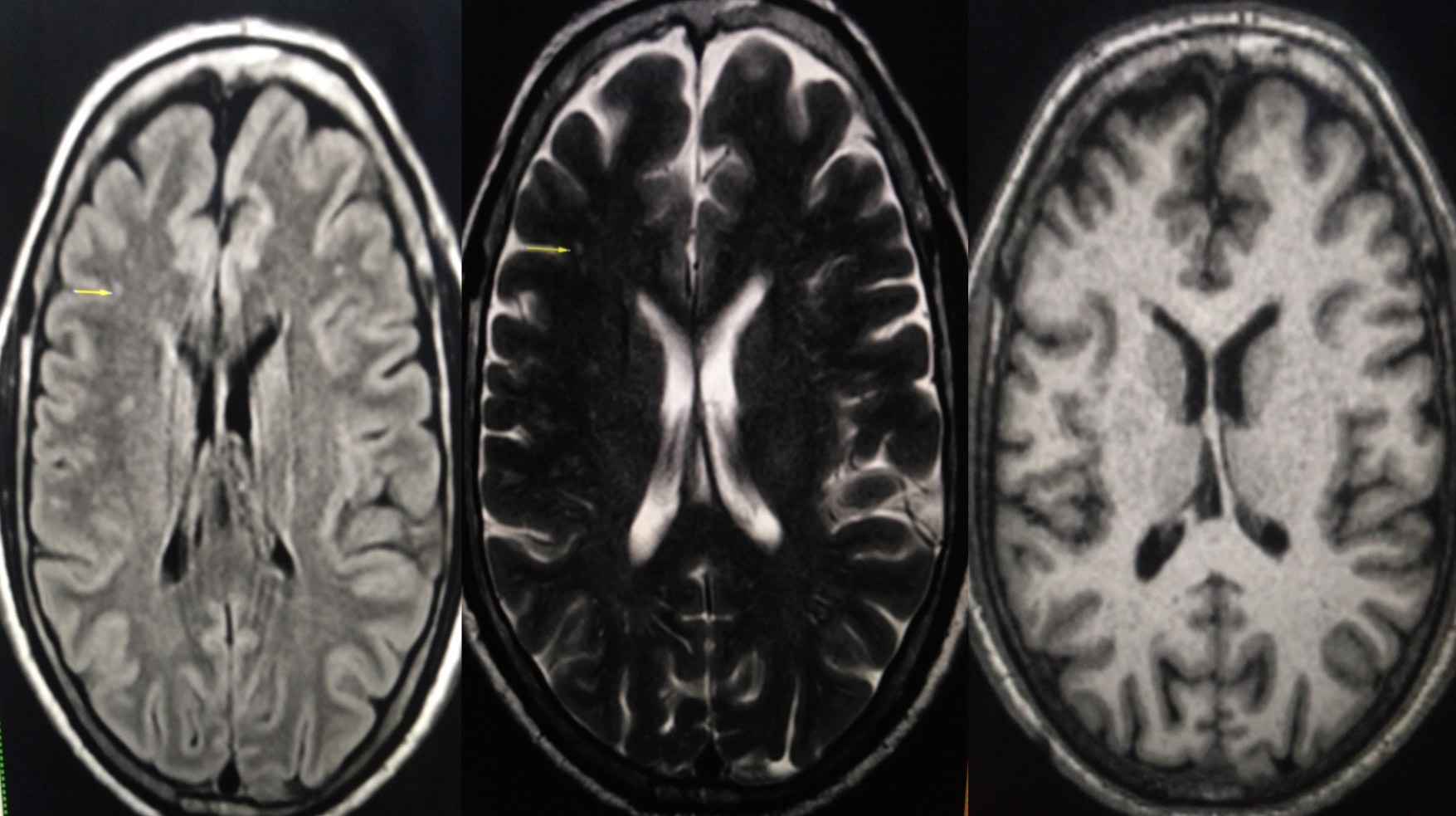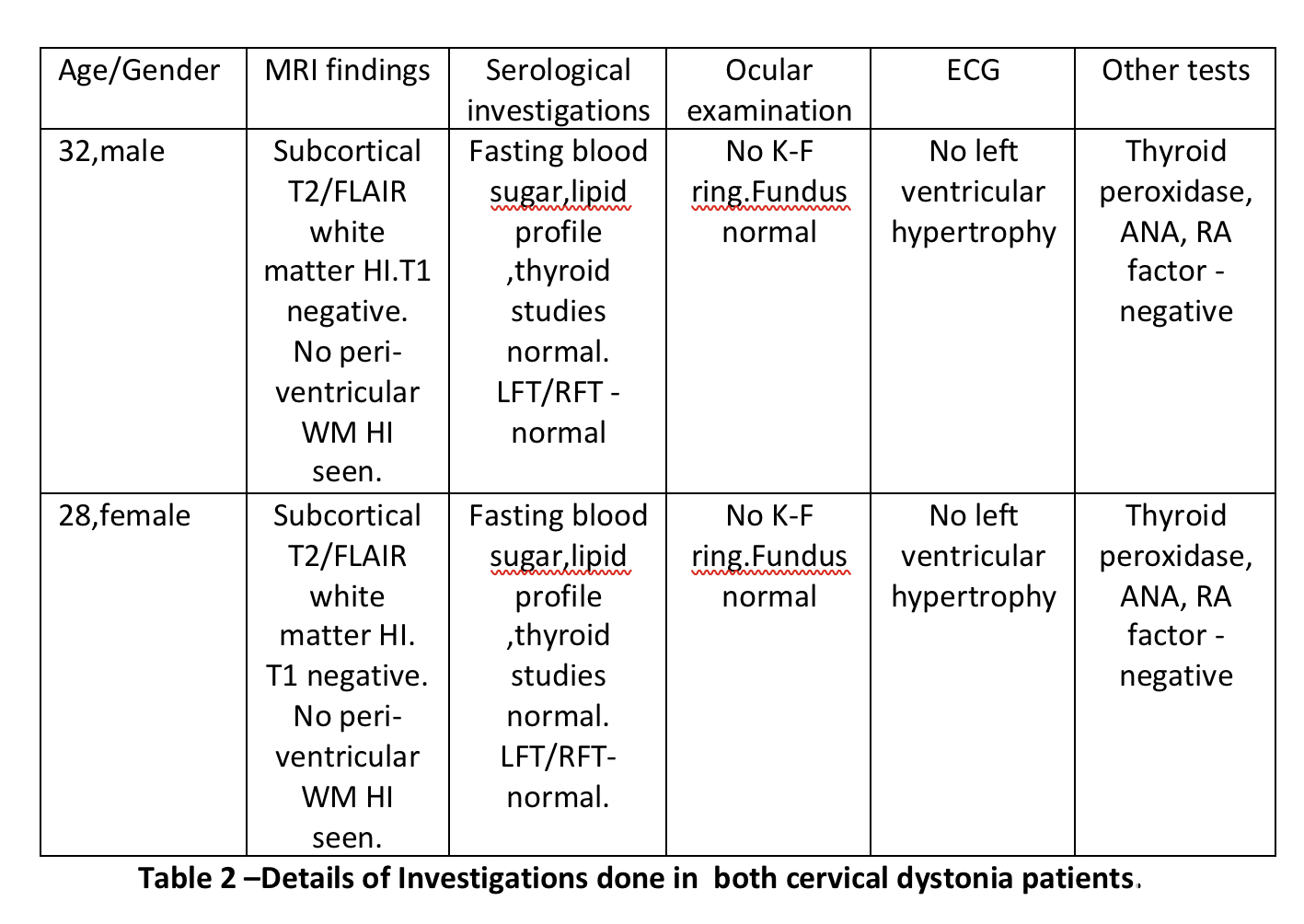Category: Dystonia: Pathophysiology, Imaging
Objective: To evaluate efficacy of immunosuppression using glucocorticoids in 2 patients of recently diagnosed cervical dystonia(CD).
Background: Most cases of CD are idiopathic. Most effective treatment for CD – botulinum toxin, relieves the symptoms rather than the pathology itself.
Method: 2 of our CD patients with recent symptom onset had T2/FLAIR white matter (WM) hyperintensities(HI) in MRI studies [Table 1]. T1 study was normal indicating recent pathology [Fig. 1,2]. Both had no vascular or metabolic risk factors to account for the HI. White matter HI are usually seen in those with hypertension, in dyslipidemia, in smokers, in diabetics or those with thyroid dysfunction or in those with neuro-inflammation [1]. After excluding all risk factors , we kept neuro-inflammation as cause of WM HI and since both patients had recent onset WM HI as well as recent clinical symptoms, a trial of oral dexamethasone was given. Both patients could not afford botulinum toxin and had shown a poor response to previously administered anti-dystonia drugs.
Results: After 2-4 weeks of dexamethasone therapy, both patients had significant improvement in their cervical dystonia [Table 2]. There was a clear temporal co-relation between symptom resolution and dexamethasone administration.
Conclusion: We report 2 cases of recent onset CD who demonstrated a therapeutic response to oral dexamethasone administration. Rationale of giving a trail of immunosuppression was based on MRI findings which indicated recent onset neuro-inflammation and lack of other metabolic/vascular causes to account for the WM HI seen on MRI . Association between cervical dystonia and auto-immunity has previously been noted in a case of chromosome 18p deletion syndrome [2]. MRI in that case had shown lesions similar to those seen in our patients although immunosuppression was not given in that study. Autoimmunity may play a role in CD pathogenesis.
References: 1. Debette, S. and Markus, H.S. The clinical importance of white matter hyperintensities on brain magnetic resonance imaging: systematic review and meta-analysis. BMJ. 2010;341: c3666. 2. Graziadio C, Rosa R. F., Fabiano M, Gazzola P.R. , Paskulin, G (2009). Dystonia, autoimmune disease and cerebral white matter abnormalities in a patient with 18p deletion. Arquivos de Neuro-Psiquiatria, 67(3a), 689-691
To cite this abstract in AMA style:
A. Panwar, N. Sawal, D. Garg, R. Kaur. Idiopathic cervical dystonia – does autoimmunity play a hand? [abstract]. Mov Disord. 2020; 35 (suppl 1). https://www.mdsabstracts.org/abstract/idiopathic-cervical-dystonia-does-autoimmunity-play-a-hand/. Accessed April 2, 2025.« Back to MDS Virtual Congress 2020
MDS Abstracts - https://www.mdsabstracts.org/abstract/idiopathic-cervical-dystonia-does-autoimmunity-play-a-hand/




